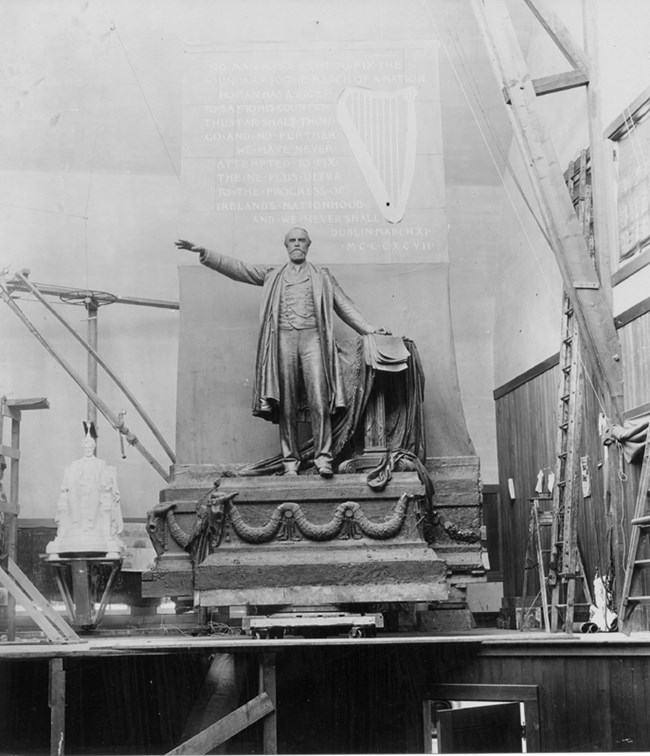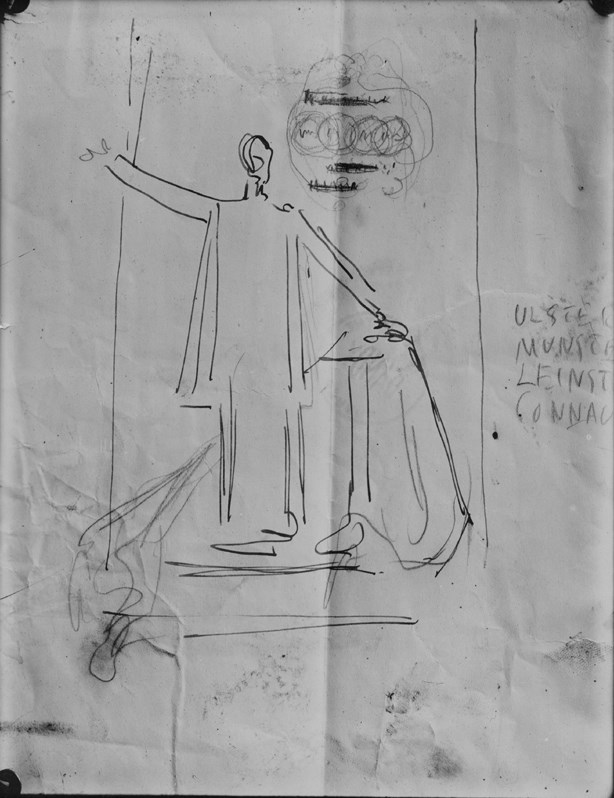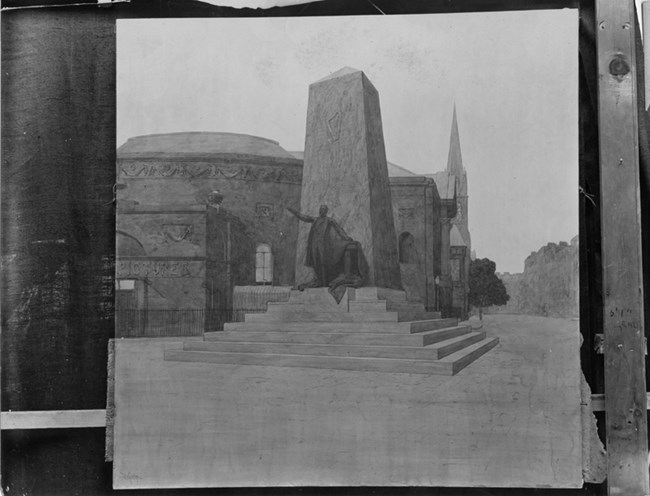Last updated: March 16, 2021
Article
Charles S. Parnell Monument

The family of Augustus Saint-Gaudens emigrated from Ireland when the future sculptor was only six months old. Four years after his death, the last public monument he saw to completion was finally unveiled in Dublin on October 1, 1911.
The Parnell Monument commemorates the Irish Nationalist, Charles Stewart Parnell (1846-1891). This member of parliament was a principal spokesperson, organizer, and party leader in the political campaign for self-government in the late 19th century. His words, “"No man has a right to fix the boundaries to the march of a nation," are inscribed on the sculpture. Parnell’s meteoric rise to prominence was cut short by revelations of his relationship with Katharine O'Shea, a married woman. Nevertheless, a movement to memorialize the legislator after his death was organized by Parnell’s political successor John Redmond in 1898. It was funded largely by Irish and American subscribers. Saint-Gaudens received the monument commission in 1900 and began work in 1903. "The work is to endure for generations, when idiosyncrasies will have been forgotten and the monument will count as a whole regardless of any personal peculiarities," the sculptor assured.
Across the Atlantic, Saint-Gaudens made a scale replica of the proposed site in Dublin and had a wood and plaster full-scale replica of the monument, including the 57-foot-tall obelisk, placed in the field adjacent to his New Hampshire studio. When the large studio burned in 1904, assistant Elsie Ward dragged a ladder to the side of the completely clay model and wrested the head off. This quick action saved the most important part of the piece from the flames in an otherwise major setback.
The work was finally cast in bronze six weeks before Saint-Gaudens death and joined other stately monuments along Dublin’s main thoroughfare when it was unveiled in 1911. The bronze figure of Charles Parnell continues to stand in front of a towering Ashlar granite pillar.
On October 25, 2007, over a hundred people gathered at the foot of the monument on O’Connell Street in Dublin. American Ambassador Thomas Foley presented a bronze plaque marking the centennial of Saint-Gaudens’ death to Lord Mayor Paddy Burke. The commemorative relief was made by the artist, Lawrence J. Nowlan (1965-2013), who served as the Sculptor-in-Residence at Saint-Gaudens National Historic Site for five years (1995-1997, 2002-2003).

Visual Description: Black and white photo of planning sketch. Includes statue of man installed atop stairs in front of oblique with buildings in the distance.

Visual Description: Black and white photo of planning sketch. Includes statue of man installed atop stairs in front of oblique with buildings in the distance
